Embracing Shakespeare’s World
Gramophone
Friday, April 22, 2016
When the 19th-century symphonic composers were drawn to Shakespeare, some remarkable concert works resulted, writes Tim Ashley.
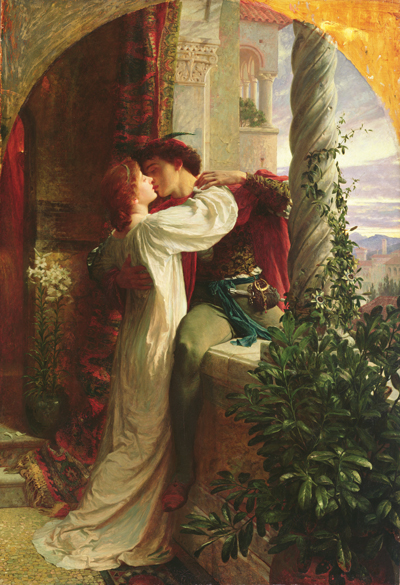
The interpreter of my life’ was how Berlioz described Shakespeare, in a characteristically grand statement. The sentiment, however, was by no means uniquely his own. Each age views, and to some extent, reinvents Shakespeare in its own image, and the 19th-century Romantics, whether in music, literature or fine art, saw in him a confirmation of their own identity and preoccupations. Some might nowadays argue that their assumptions were on occasion misguided, and that their views of Shakespeare square uneasily with those of our own time. But our views are, in part, still coloured by theirs, and Shakespeare’s impact in the 19th century was seismic, in ways that previous eras had not experienced.
Berlioz was not the first composer to be drawn to Shakespeare, but his reaction was the most extreme. Though the tale of what amounted to an obsession on his part is frequently told, it needs, perhaps, to be placed in the wider cultural context, which the composer, in his Memoirs, tends to play down. On September 11, 1827, he went to a performance of Hamlet given by Charles Kemble’s company at the Odéon in Paris and, though his English was minimal, he fell violently in love with the play, its author, and the Irish actress Harriet Smithson, cast as Ophelia: his feelings intensified four days later when he saw her as Juliet. His description of his experience is couched in terms both ecstatic and religious. He casts himself as Lazarus and Shakespeare as Christ: ‘I saw…I understood…that I had risen from the dead and that I must get up and walk.’ The sense of Shakespeare ushering in new life and, with it, new expressive worlds and possibilities, defines his music.
Berlioz makes only a passing reference, however, to ‘the enthusiastic support’ for Shakespeare on the part of ‘the new school of literature, led by Victor Hugo, Alexandre Dumas and Alfred de Vigny’. All three were, in fact, present at the same performance of Hamlet, and were comparably impressed. De Vigny’s Le more de Venise, a version of Othello, was controversially taken into the repertory of the Comédie-Française in 1829. A year later, Hugo caused a furore with Hernani by grafting elements of Shakespearean versification onto a play written in Alexandrine couplets, the traditional metre of French poetic drama. The continental discovery of Shakespeare was to some extent contemporaneous both with his rediscovery in Britain and the burgeoning of the Romantic movement itself. The Age of Reason found him slipshod, and the late-17th and early-18th centuries classicised him in reworkings that attempted to adhere to Aristotelian ideas of dramatic unity. Romanticism rebelled against such constraints, and the British theatrical reversion to something approximating the original texts coincided with the Sturm und Drang movement in Germany, the rise of the Gothic novel, and the growing cult of the Byronic hero: the ultimate Romantic outsider, attractive, shameless and existentially guilty.
The early 19th century was also an age of great translations, nowhere more so than in the German-speaking world where August Wilhelm Schlegel’s versions of Shakespeare were – and still are – regarded as a landmark in the language. In France, the legacy of Classical theatre, with its aristocratic associations, proved pervasive until the Revolution and persisted into the Napoleonic era. For the French Romantics, Shakespearean drama, with its blurring of genres between tragedy and comedy, its emotional and sexual ambiguities, its violence and passion, licensed both the direct expression of personal emotion and drastic experimentation with form. Berlioz’s Shakespearean works aim at the dissolution and re-creation of genres in an attempt to capture the poetic and dramatic essence of the plays. The overture Le roi Lear (1831), with its slow introduction followed by a hurtling allegro, is in some respects the most conventional. But the introduction, with its imperious string phrases and firm, yet gentle answering woodwind, re-enacts in sonic terms the opening confrontation between Lear and Cordelia, and the allegro depicts the storm, psychological and metaphysical, that forms its consequences.
In Lélio, ou Le retour à la vie, for narrator, soloists, chorus and orchestra, premiered the following year, the form, however, is shockingly new. Conceived as a sequel to his Symphonie fantastique, it depicts the process of psychological recovery from the symphony’s overtly personal malaise, in which immersion in Shakespearean drama offers eventual redemption from the Gothic-novel trappings of the Symphonie Fantastique’s narrative and emotional landscape. The score, some of it pasticcio, assembles new and pre-existing material, and Berlioz explicitly aligns Shakespeare with Romanticism by placing him alongside Goethe and the fashionable Irish poet Thomas Moore. And in the second-movement ‘Choeur d’ombres’, a reworking of the ‘Méditation’ from La mort de Cléopâtre which evokes the melancholic mood of Hamlet, the eponymous protagonist loses his sardonic humour and is reimagined as something of a Byronic loner, a view that Berlioz later reinforced in his lofty Marche funèbre pour la dernière scène d’Hamlet in 1844. Redemption is brought about, however, by the choral Fantaisie sur la Tempête de Shakespeare of 1830. Rippling pianos evoke the ‘noises, sounds and sweet airs’ of Prospero’s island, while ricocheting strings suggest the impending storm. In marked contrast to the present-day emphasis on Prospero as protagonist, the narrative focuses on the relationship between Ferdinand and Miranda, whom the chorus offer ‘a ne life’ (‘un novello viver’), symbolic of Lélio’s significance as a whole.
‘In Berlioz’s ‘Romeo et Juliette’, the formalities of the Capulets’ ball are replaced by well-nigh orgiastic revelries’
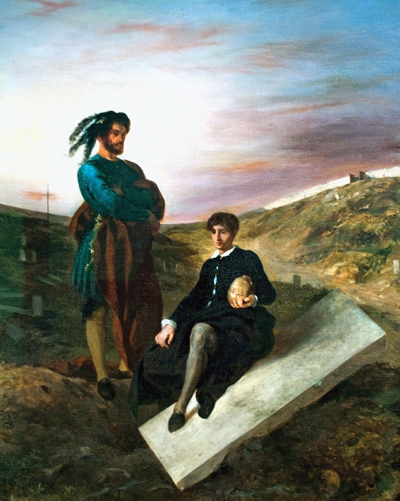
The dramatic symphony Roméo et Juliette, dating from 1839, represents, in many ways, the greatest of all Romantic responses to Shakespeare. Those who view it as an unwieldy hybrid are missing the point that it mirrors the complexities of Shakespearean dramaturgy by folding a multiplicity of vocal and orchestral genres into a single work. The opening orchestral fugue for the feuding Montagues and Capulets leads into a series of motets and songs that spell out the narrative before a sequence of symphonic and choral movements distil key scenes and speeches from the play. The tensions are eventually resolved in an operatic finale of Meyerbeerian weight for Friar Laurence and full chorus.
Ironically, it is based not on Shakespeare’s original, but on a version, used by Kemble’s company, by David Garrick, who rewrote the final pages to allow Juliet to wake from her drugged sleep before Romeo’s death rather than after it. Berlioz pulls away from the play in tone: the Shakespearean formalities of the Capulets’ ball, where the lovers’ language coalesces into sonnets, are replaced by well-nigh orgiastic revelries; thescène d’amour suggests mature sexuality rather than teenage desire; and the ‘Queen Mab’ Scherzo lacks some of the darkness of Mercutio’s original speech, which equates love with madness.
Queen Mab gave Berlioz some anxiety, however, for in 1831, he suggested the speech as a possible subject to Mendelssohn and subsequently became antsy at the thought he might actually tackle it. Mendelssohn had got to Shakespeare first, with his Overture to A Midsummer Night’s Dream, inspired by Schlegel’s translation and written in 1826, when he was only 17 (the incidental music came later in 1842). The first Shakespearean work for the concert hall, it was comparably, if more discreetly, revolutionary. Though its form, a tautly woven sonata, is conservative, its scampering fairy music redefined the parameters of texture and sonority. Berlioz could not have written Roméo et Juliette without it, and the composers who tackledShakespeare in his and Mendelssohn’s wake would be dependent on the innovations of both.
Tchaikovsky was also drawn to the same three plays that dominated Berlioz’s imagination with his Fantasy-Overtures Romeo and Juliet (1869, revised in 1870 and 1880) and The Tempest (1873), and the Overture-Fantasia Hamlet (1888). The first two can be seen as coloured by his attitudes to his own sexuality. As in Berlioz’s interpretation, there is a sense of gathering eroticism in the depiction of Romeo and Juliet, whose passion is now fiercely under threat from the music associated with the Montague-Capulet feud. The relationship between Ferdinand and Miranda is comparably central to The Tempest, but their escalating
desire – this is Tchaikovsky at his sexiest – is surrounded by frequent suggestions of unease, most notably in the eerie depiction of a ship rocking at sea that opens the work and then brings it to a close in a mood far removed from the play’s reconciliatory ending. Hamlet, meanwhile, is once more the moody outsider, more neurotic, less noble than his Berliozian counterpart, harried by his spectral father and angrily wary of Ophelia’s affection. The form is again experimental, suggesting Hamlet’s uncertainties and indecisions by undermining the security of what sounds like a big sonata exposition with the introduction of new material where we would expect a fully worked-out development.
Tchaikovsky’s Hamlet is often compared unfavourably to Liszt’s symphonic poem of the same name, written in 1858 following a performance of the play in Weimar in which the title-role was played by the Polish born actor Bogumil Dawison, whose interpretation Liszt admired: his letter to Agnes Street-Klindworth in January two years previously contains a lengthy analysis of Dawison’s treatment of Hamlet’s relationship with Ophelia. In ways that echo the opening of Berlioz’s Lear, Liszt dramatises the couple’s confrontation in Act 3, Scene 1. The brooding introduction captures the existential uncertainties of ‘To be, or not to be’, before a woodwind recitative introduces Ophelia, her hesitant utterances provoking a violent allegro of repudiation, its harmonic irresolution suggesting the vacillating anguish of Hamlet’s emotions.
For Smetana, in contrast, the gravitation towards Shakespeare was political. The appearance of the plays in the Czech language in the 1850s had nationalist connotations at a time when the Austro-Hungaria authorities were bent on imposing German as a uniform language on the Empire. In 1851, Richard III was the first play to be published, and Smetana responded, in 1857, with his ‘fantasia for full orchestra’. The halting rhythms of the principal theme suggest the king’s awkward gait, but Smetana’s Richard is an altogether nobler, more sympathetic figure than Shakespeare’s Machiavellian schemer, and this is a portrait of a grand rise to power, followed by a precipitate fall that is darkly and genuinely tragic. Romanticism had begun to romanticise.
Strauss’s Macbeth, however, took Shakespeare into radically different territory. His first tone-poem and his first psychodrama, it was prophetic of much that followed, though its awkward genesis – written before Don Juan, it was premiered after it and has a later opus number – has led to an underestimation of its importance. An atheist, distrustful of metaphysics, Strauss jettisoned the supernatural episodes (there are no witches or apparitions, not even Banquo’s ghost), stripping the play down to a series of colloquies between the murderous Thane and his wife. There is a debt to Tchaikovsky’s Romeo and Juliet in the terrifying syncopations that represent the knocking on the castle door after Duncan’s murder, while a Lisztian textual awareness informs the thematic structure. Lady Macbeth’s ‘Hie thee hither / That I may pour my spirits in thine ear’ is printed in the score at the first appearance of the motifs that represent her. Her seductive, wheedling woodwind, followed by churning, throbbing strings, suggest mental instability from the outset, ushering us into the world of emotional extremes that the composer was to explore more fully in Salome, Elektra and the shell-shocked Menelaus of Die Aegyptische Helena.
Elgar’s admiration for Strauss can be discerned in Falstaff, his symphonic study in C minor, first performed in 1913 – the last major Romantic score to be based on Shakespeare and a work that effectively brings him home to England. The narrative derives from the Henry IV plays, rather than The Merry Wives of Windsor, and at its centre lies the relationship between Falstaff and Prince Hal, the future Henry V, who rejects his former friend and drinking companion when the duties of monarchy finally call. For all its wit and humour, the tone is predominantly elegiac, exposing ‘the undercurrent of our failings and sorrows’, to quote Elgar in a letter to Ernest Newman. The majestic, quintessentially ‘Elgarian’ melody that runs through it, reaching an almost oppressive climax near the close, represents Hal and the inflexible nobility of kingship. Though sometimes criticised as episodic, Falstaff ranks among Elgar’s most richly ambiguous achievements.
The history of music’s relationship with Shakespeare has to some extent been, and remains, symbiotic. In Act 3, Scene 2 of Hamlet, the prince instructs the players to ‘hold, as ‘twere, the mirror up to nature…and show the very age and body of the time his form and pressure’. The Romantics held their own mirror up to Shakespeare and produced music of comparable greatness in his name. But in so doing they brought their own concerns, private and public, to bear upon his image and it is ultimately themselves – as well as him – that we find reflected back.
FOUR SHAKESPEARE RECORDINGS
Bard-inspired works from Berlioz, Liszt, Smetana and Strauss
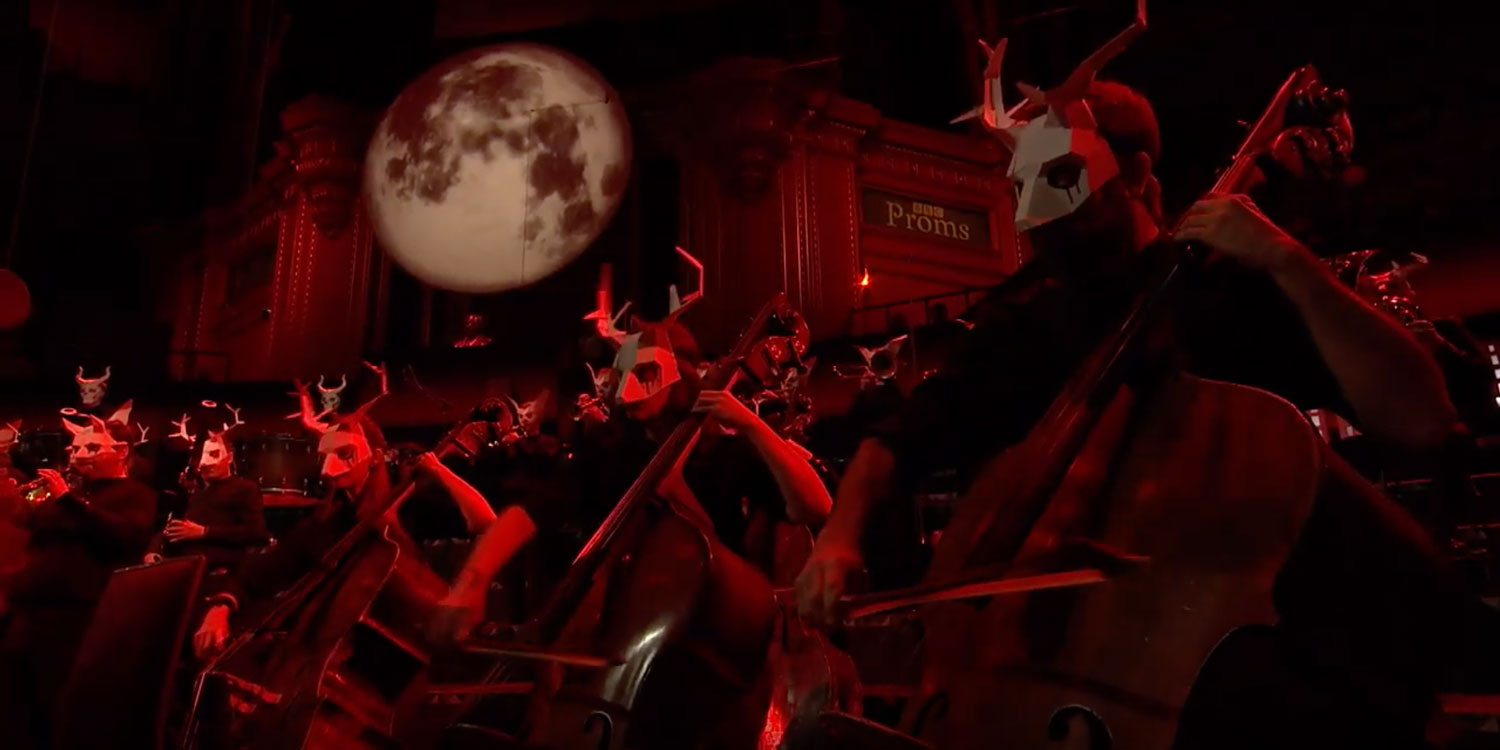
Berlioz: Roméo et Juliette
Vienna PO / Colin Davis
(Phillips)
The ultimate Romantic evocation of Shakespeare, this is a score that celebrates freedom from Classical restraint. Berlioz dissolves genre boundaries as he strives to capture the emotional directness, shifts of tone and multiple ambiguities of the Bard’s work
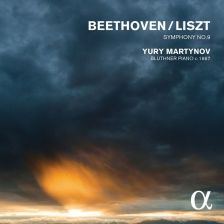
Liszt: Hamlet
Leipzig Gewandhaus Orchestra / Kurt Masur
(Warner)
Arguably the greatest orchestral work based on Hamlet, Liszt’s superbly realised character portrait is structured around Act 3, Scene 1 of the play, which contains the ‘To be, or not to be’ speech and the Prince of Denmark’s catastrophic rejection of Ophelia.
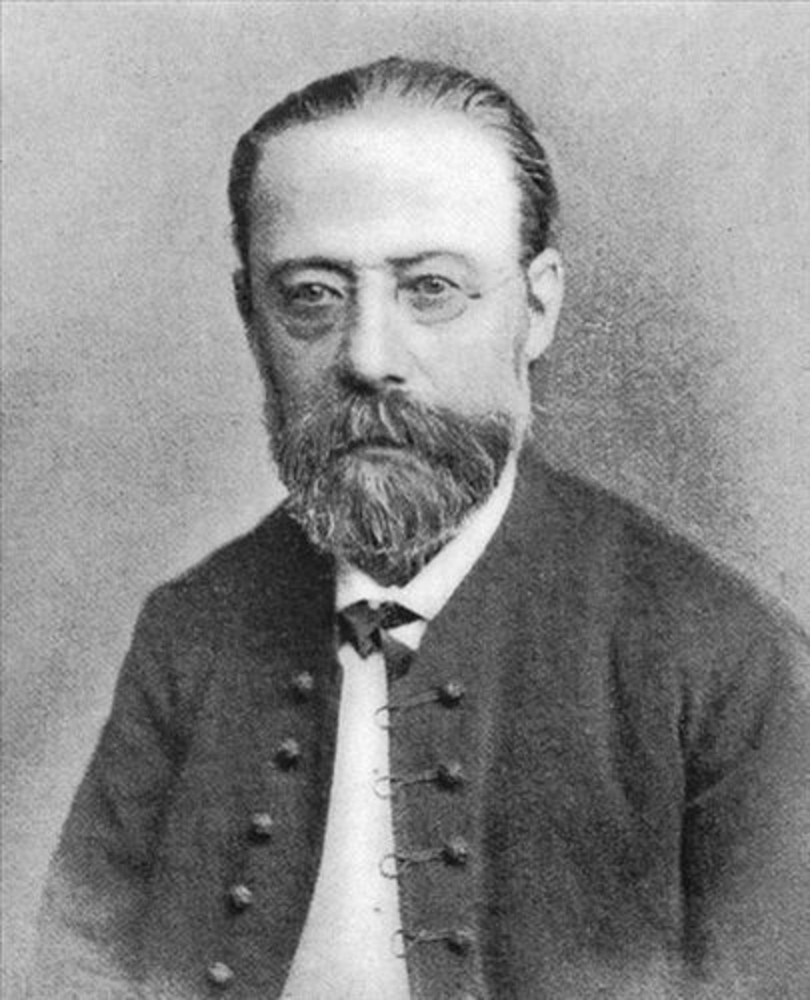
Smetana: Richard III
BBC Philharmonic / Gianandrea Noseda
(Chandos)
A political work with nationalist overtones, it was inspired by the first translation into Czech of any of Shakespeare’s plays. Smetana’s reimagining of Richard as a tragically noble figure strays far from the original, though the score is unquestionably powerful.
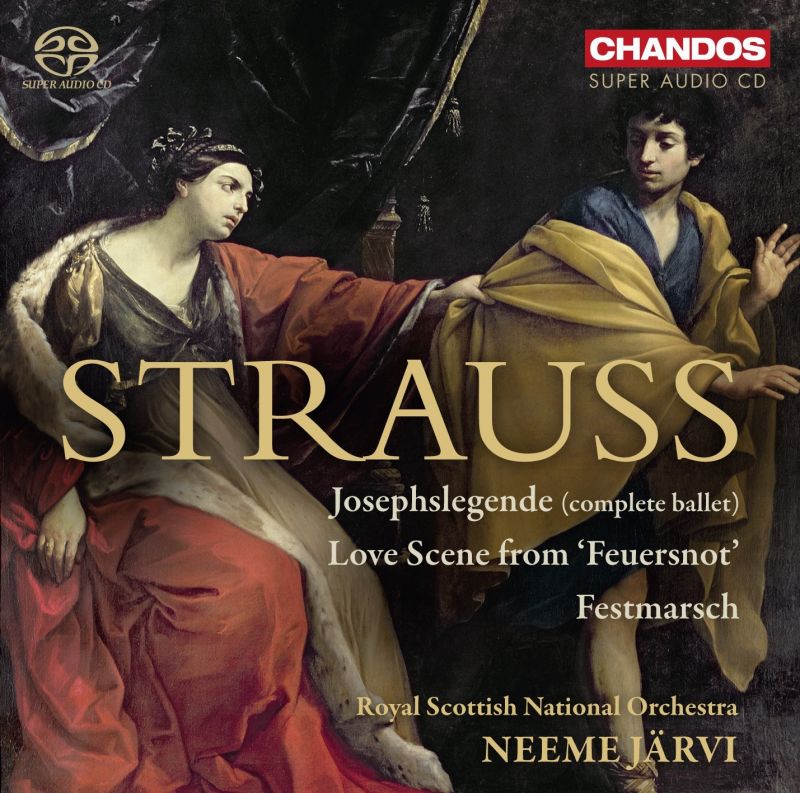
Strauss: Macbeth
Staatskapelle Dresden / Rufolf Kempe
(Warner)
Strauss reinvents Shakespeare as psychodrama, stripping the play down to a taut sequence of colloquies between the murderous Thane and his mentally unstable wife. This is Strauss’s first tone-poem and a work that contains, in embryo, much that was to follow











